What exactly is physical information security? Physical information security is the intersection, the common ground between physical security and information security. It primarily concerns the protection of tangible information-related assets such as computer systems and storage media against physical, real-world threats such as unauthorized physical access, theft, fire and flood.
In order to setup a proper information security system in place, the following points need to be kept in mind.
Get a good lock for the server room
Before you even consider setting up the servers and securing them and getting together your tech team, ensure you get a good lock for the server room. Of course, the best lock in the world does no good if it isn’t used, so you also need policies requiring that those doors be locked when the room is unoccupied, and the policies should set out who has the key or keycode to get in.
Surveillance system
Getting locks for the server room is a step in the right direction toward enabling information security. But you also need a surveillance system in place to monitor the security measures you have put in place. It is possible that someone could break in, or someone who has the access and authority could misuse it. So for example, a better solution to the log book is an authentication system incorporated into the locking devices, so that a smart card, token, or biometric scan is required to unlock the doors, and a record is made of the identity of each person who enters. Also, set up video cameras put up in locations that make it difficult to tamper or disable the security system in place.
Place most vulnerable devices in the locked room
A hacker could plug into one of the hubs and use sniffer software to capture the data flowing across the network. Make sure that as many of your network devices as possible are in that locked room, or if they need to be in a different area, in a locked closet elsewhere in the building.
Rack mount servers
These types of servers can be easily secured. They take up less server room real estate. Rack mount servers are smaller and arguably lighter compared to some tower systems. They can be easily locked into closed racks and packed away. Once loaded with several servers, it can then be bolted to the floor, making the entire package almost impossible to move, much less to steal.
Protect portables
Laptops and handheld computers pose a special security risk. Make sure people take their workstations (if laptops) with them or if not then secure them to a permanent fixture with a cable lock.
Protect your printers
Printers just like servers and workstations that store important information, should be located in secure locations and bolted down so nobody can walk off with them. If a hacker steals the printer and accesses the memory, he or she may be able to make copies of recently printed documents.
Ensure that you conduct a security audit for your business regularly to have a tight security system. Get your information security set up right by consulting GPS Security, who will be able to guide you about the various aspects that you need to take care of in Edmonton. `










